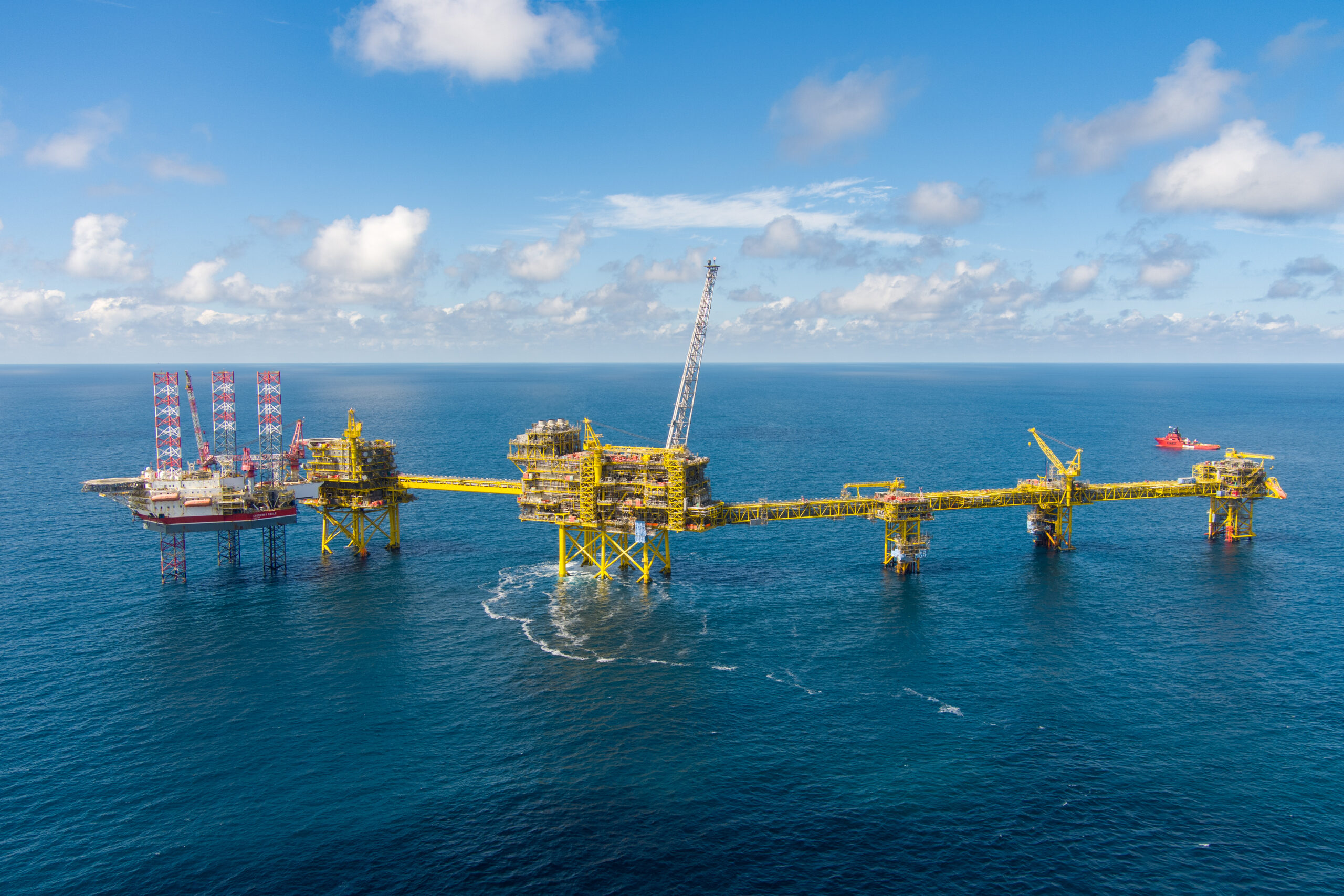300 skilled experts from Western Jutland will now start the hook-up of Denmark’s new gas field Tyra II

The last welding has been completed successfully, and thereby three production platforms and two connecting bridges have been installed at the Tyra Field in the Danish North Sea. This marks the first milestone in the build-up of one of the world's most advanced gas fields – Tyra II. More than 300 specialists and craftsmen from especially Southern Danish companies are now ready to kick-off the offshore hook-up scope which will last several months.
In late August, the very first parts of Tyra II arrived in the Danish North Sea. Within a week, the Tyra East production topsides – the two wellhead topsides and one riser topside – were lifted into place with enormous precision by the world’s largest crane vessel Sleipnir. The up to 40 meters high and 2600 tons heavy topsides are now in final position on the jackets which are reused from the original field design.
“This is truly a crucial milestone in the build-up of the new Tyra II, which will become one of the world’s most advanced gas fields. New technology, better monitoring and use of big data will ensure a much more efficient production and will reduce CO2 emissions from the new field by 30 percent equivalent to the yearly emissions of 35,000 Danish cars”, says Morten Hesselager Pedersen, Vice President, Head of the Tyra Redevelopment for TotalEnergies EP Denmark.
Thereby the new Tyra II is starting to take shape , and once it is completed and the field reopens, it will become a central part of the Danish energy infrastructure for natural gas production. Tyra II will be part of setting the standards for natural gas production and processing.
“The installation has been a textbook operation, and . All elements was carried out very well. It is fascinating because the entire operation is rehearsed almost like a theater play, where each lift and action is executed based on a more than hundred pages long script. The three production topsides and bridges are enormous, and I am really impressed byour teams and how they have carried out the installation with millimeter-precision”, says Morten Hesselager Pedersen.
Local businesses take over
With the first platforms and bridges in place, a team of 300 specialists and craftsmen is now kicking off the large hook-up work scope. Technology, pipes and parts must be assembled, put into operation and tested – especially local Esbjerg companies are responsible for this part.
Until the production restart in winter season 2023/24, more than 1.3 million working hours will be spent offshore on the Tyra field to get everything ready.
“All the preparations for this started way back in 2013, so it is a landmark day to see the first physical contours of Tyra II in the Danish North Sea. With a safe and successful completion of the installation of the very first Tyra II modules, we are now embarking on a new chapter in the Danish oil and gas history. We are setting a crucial milestone because the Tyra field plays such a major role in the Danish energy infrastructure, and it will be more than exciting to continue the build-up with the remaining platforms next year”, says Morten Hesselager Pedersen.
The first three production platforms that are now in place in the North Sea are two so-called wellhead platforms and one riser platform. From the production platforms the wells are running into the reservoir, and it’s here the natural gas flows into Tyra II. In addition, two 100-meter-long bridges to connect the platforms have been successfully installed as well.
The remaining five out of eight new platforms – including the process and accommodation platform, which together will be the new Tyra II field – will arrive in 2022. This is followed by installation and hook up, and the restart of production is expected during the winter season 2023/24.
FACTS ON THE TYRA REDEVELOPMENT
- TotalEnergies is the operator of the Tyra field on behalf of DUC – a partnership between TotalEnergies (43.2%), Noreco (36.8%) and Nordsøfonden (20%).
- The DUC partners invest a total of DKK 21 billion in redeveloping the Tyra field, which makes it the largest Danish oil and gas investment ever.
- Tyra is Denmark’s largest natural gas field, and the field is a center for processing and exporting more than 90% of the natural gas produced in the Danish North Sea.
- Production and export from the field were temporarily closed in September 2019, and the field will reopen during winter season 2023/24. It is expected that Tyra will reach a peak production corresponding to 60,000 barrels per day.
- A redevelopment of the Tyra field is necessary due to the field’s natural subsidence of the chalk reservoir after many years of production. The platforms have sunk approximately 5 meters over the past 30 years, which has reduced the distance between the sea and the topsides.
- The redevelopment of the Tyra field includes three main elements: decommissioning as well as recycling and disposal of the old Tyra platforms; recycling and extending the current platform legs on six of the platforms with 13 meters, which will have new topsides; a completely new process platform and a completely new accommodation platform.
- More than 70 local companies in the offshore sector in and around Esbjerg contribute to the Tyra II project.










